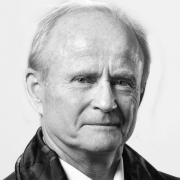Conserving Heritage Buildings & Districts: A Case for Economic, Social, and Environmental Resiliency
This webinar is part of the RAIC 2023 Conference on Architecture, now available to stream!
Topics: Climate Justice and Resilience, Sustainability, Adaptation and Mitigation
Length: 1 hour | What's Included: Video, Quiz, and Certificate of Completion
Learning Objectives:
By the completion of this session, participants will be able to:
- Customize the presented heritage conservation tools and strategies to their own situation based on their particular municipal governance, bylaw, and policy structures.
- Communicate to building owners the monetized value of existing infrastructure through the lens of triple-bottom-line valuation.
- Present to Authorities having jurisdiction factual strategies and approaches confirming that conservation of heritage buildings is able to meet sustainability goals as well as address current building and energy code requirements.
- Communicate that heritage conservation, as a critical aspect of appropriate urban revitalization, contributes significantly to economic, social, and environmental resiliency.
Subject Matter Expert:
Mr. Mark Chambers

OAA
Director of Conservation Architecture, Lemay
Mark Chambers plays a key role in the development of heritage project strategies within Lemay. With a passion for architecture stemming from a childhood working with his father, a designer and builder, his interest in heritage conservation results from growing up in a small rural Alberta town with a largely intact Main Street from the 1890s and early 1900s. His passion for conservation has grown into understanding how contemporary uses and interventions can coexist with historic conditions in a mutually beneficial environment. Mark taught as a part-time sessional instructor with Mount Royal University and the University of Calgary. He is a former President of The Alberta Association of Architects and is currently a registered architect in Alberta and British Columbia. Mark was inducted as a Fellow of the Royal Architectural Institute of Canada in 2014 and is a member of Canadian Association of Heritage Professionals.
Mrs. Grace Coulter Sherlock

B.A., M.Arch
Principal, Regional Director, West at Lemay
As Principal and Regional Director for Lemay Western Canada, Grace Coulter Sherlock oversees all stages of the design process, providing the team with guidance, creative direction and support. An exceptional design strategist and communicator, she is often called upon to lead and inform the development of challenging typologies, inspiring the creation of sustainable and human-focused places. Grace’s practice of architecture is centered on the research and dialog surrounding inclusive design models. Grace is an Assistant Adjunct Professor at the University of Calgary, School of Architecture, Planning and Landscape and is currently serving as the Alberta Association of Architects representative on the SSRC Partnership Project: Quality in Canada’s Built Environment (2022-2027). She is a registered practitioner in Alberta, Saskatchewan and Manitoba.
Pricing A-La-Carte




